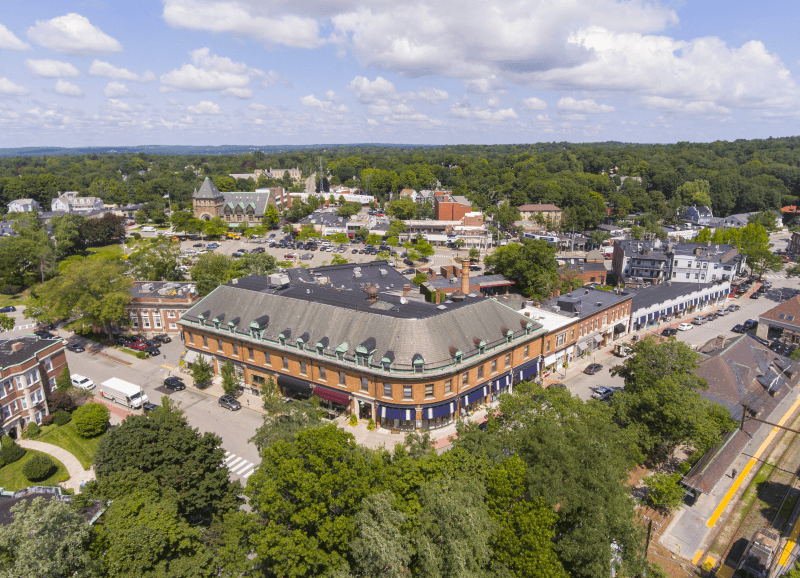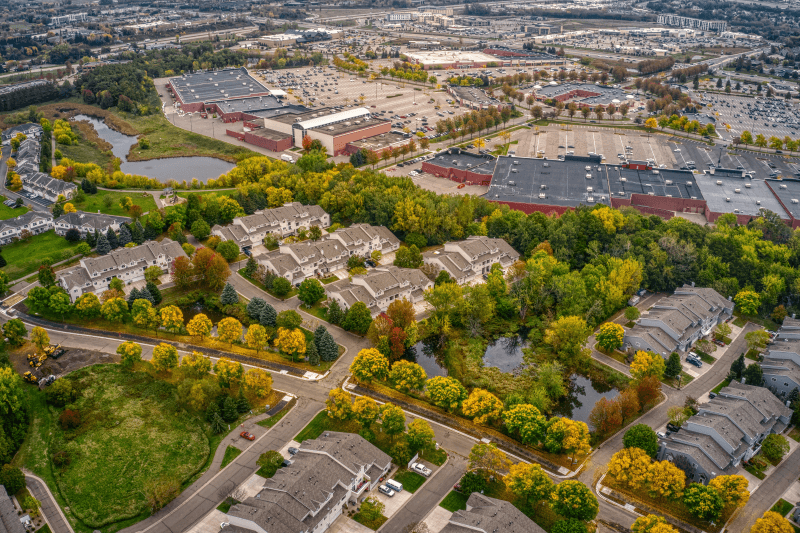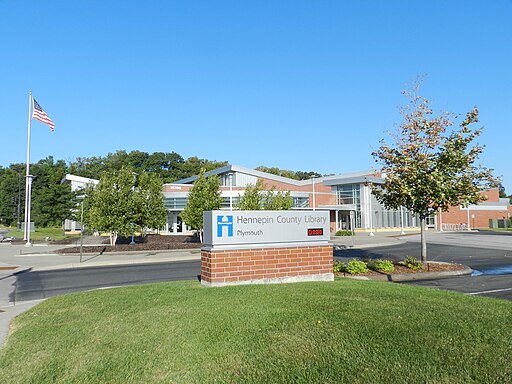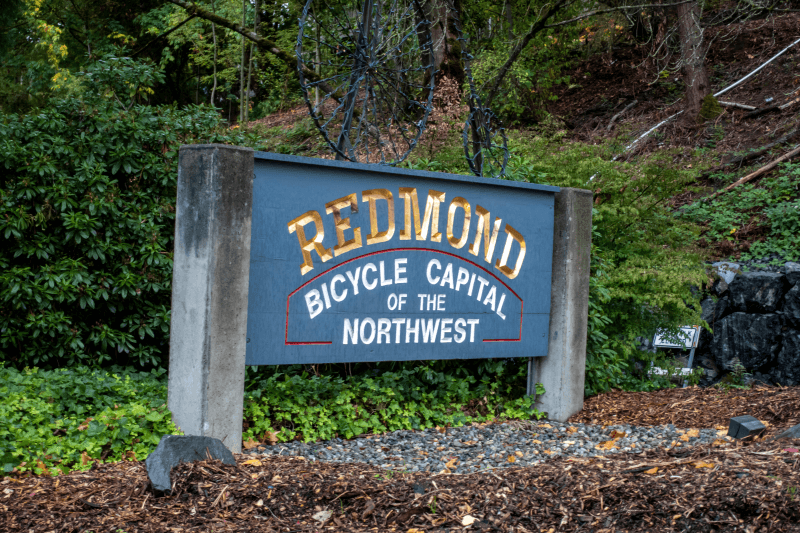
Which U.S. cities are setting the gold standard for quality of life?
LawnStarter examined 50 metrics covering health, safety, education, affordability, and environmental factors across 13 categories to identify 2025’s Leading Cities for Quality of Life.
A sneak peek? California lands 37 of the top 100 cities, while Texas claims 30 of the bottom 100.
- 💼 Unemployment in Plymouth, Minnesota (No. 3) is just 2%, and every paycheck stretches around 54% farther than the average city in our study.
- 📚 In Massachusetts, Newton and Cambridge are among the most educated cities in the nation, with nearly 8 in 10 residents holding a bachelor’s degree.
- 🛡️ The top-ranked city, Newton, Massachusetts, is safer than 62% of U.S. cities, more than 4x the ranking average.
See where the 500 largest U.S. cities landed below. To learn how we ranked the cities, see our methodology.
Contents
- Top 5 U.S. Cities for Leading Quality of Life
- Quality of Life City Rankings
- Key Insights
- Metric Highlights
- Ask the Experts
- More Takeaways
- Q&A With LawnStarter’s Editor-in-Chief
- Methodology
- Planting the Seeds for Better Well-Being
Top 5 U.S. Cities for Leading Quality of Life
Check out the slideshow below for a closer look at each of our top 5 cities.
1st = Highest Quality of Life
Quality of Life City Rankings
See how each U.S. city ranks for quality of life:
Key Insights
Big-city living doesn’t guarantee a high quality of life. Among the 30 largest U.S. cities, only San Francisco (No. 25), Seattle (No. 26), and San Jose (No. 43) cracked the top 50. Others like Philadelphia (No. 436) and Houston (No. 462) fell toward the bottom.
Several of the country’s largest metros even landed in the bottom 10, including Detroit (No. 499) and Memphis (No. 495), where violent crime remains high and poverty rates are more than 65% higher than the average city in our study.
San Bernardino (No. 456) stands out for all the wrong reasons: nearly 94% of residents consider the city dirty or untidy, and its pedestrian fatality rate is more than 3x the national average per 100,000 residents.
Top-ranked Newton (No. 1) and Cambridge (No. 16) in Massachusetts are among the most educated with nearly 8 in 10 residents holding a bachelor’s degree. Other top performers include San Ramon (No. 8) and Berkeley (No. 36) in California and Boulder, Colorado (No. 35), while Virginia cities like Alexandria (No. 42), Virginia Beach (No. 68) and Chesapeake (No. 136) post the highest student proficiency rates.
Food insecurity remains a challenge in many parts of the country. 185 cities report rates above the 13.43% median, with more than 1 in 5 residents affected in parts of Texas and Arkansas. Only a handful of cities fall below 9%, including Woodbury, Minnesota (No. 2), Castle Rock, Colorado (No. 6), Quincy, Massachusetts (No. 54), and Bismarck, North Dakota (No. 83).
In top-ranked cities like Castle Rock (No. 6), lower levels of hardship often reflect the cumulative impact of community investments such as strong schools, local amenities, accessible green space, and opportunities for active living.
While our study reflects the latest available data, it may not fully capture recent efforts aimed at urban renewal. Detroit (No. 499) has seen growing investment and redevelopment, offering a potential playbook for cities like St. Louis (No. 425), which are now seeking similar turnarounds.
Discover more insights below.
Metric Highlights
Ask the Experts
We turned to a panel of experts to better understand the key factors that shape quality of life in cities and how elements like infrastructure, environment, and healthcare influence daily life for residents.
- What are three key factors that contribute to a high quality of life in urban areas?
- How do environmental factors, such as air quality and green spaces, influence the quality of life in a city?
- What are three ways urban planning and infrastructure impact residents’ quality of life?
- How do economic variables like employment rates and cost of living affect the overall quality of life in different cities?
- What role do educational opportunities and institutions play in determining the quality of life in a city?
- How do access to healthcare and public health services contribute to the quality of life in urban populations?





What are three key factors that contribute to a high quality of life in urban areas?
First, we know that when people have access to nature and green spaces they are happier and healthier. The biophilia hypothesis states that exposure to natural sounds, like water, and to dynamic natural light, can improve our mental health and focus. Research also shows that even simple changes like adding street trees can improve health outcomes for urban residents and even extend life expectancies.
Second, in many ways, how we get around determines the quality of our everyday lives. Our commutes can be easy or challenging, and leave us refreshed or truly miserable. When urban infrastructure supports a wide variety of transportation options and considers the needs of all users (children, the elderly, people with disabilities, and so on), people can more easily connect to one another and to social, educational, and economic opportunities.
Finally, because much of our quality of life is determined by public spaces and public services, effective and responsive government is key. Public officials must anticipate, study, and plan for the needs of their communities in terms of infrastructure, public safety, and community wellbeing. By creating opportunities for community input and utilizing best practices in urban and community development, local governments can substantially improve quality of life.
How do environmental factors, such as air quality and green spaces, influence the quality of life in a city?
Not only do environmental factors like clean air and water quality impact public health, the environment can also improve the quality of our day to day lives. Having access to green spaces to exercise, play, and gather improves both our physical and mental health. Open spaces also have the capacity to help build social capital – the connections among members of a community that foster trust and support. For example, a park that is centrally located and accessible can be a site for everyday play by both children and adults, the venue for community festivals and celebrations, and an important means of connecting with nature. In this way, strong park systems can help create strong communities.
What are three ways urban planning and infrastructure impact residents’ quality of life?
First, good planning and infrastructure can make getting around much easier, safer, and more efficient. Planning is all about considering both current and future needs. For instance, when a city or region adequately understands how growth will impact demand for roads, mass transit, and air travel, infrastructure can be created to meet increasing needs without compromising the experience of current users. Supporting a wide variety of transportation options – pedestrian and cycle pathways, mass transit, as well as private vehicle travel – ensures that all kinds of people are able to make their way safely and efficiently.
Planning can also be instrumental in creating – or eroding – a sense of place. Creating and preserving special places, whether these are open spaces or historic sites, can call attention to the unique qualities and traditions of a city or town. For example, in Boise, Idaho, open space in the foothills provides an iconic backdrop that distinguishes the city from other western places. Similarly, the Boise River Greenbelt provides indispensable cycle and pedestrian infrastructure as well as a symbol of Boise’s laid back, outdoor lifestyle.
Finally, we should also consider public services like libraries, parks, schools, community centers as key parts of infrastructure. Planning for the full needs of a community can help ensure that these resources have adequate capacity, are well staffed, and are responsive to community needs and interests.
What role do educational opportunities and institutions play in determining the quality of life in a city?
Not only do educational institutions serve current students, they can also play an important role as social and cultural institutions within their communities. For example, an elementary school may offer key services like afterschool programs and child care, as well as providing gathering places for clubs and organizations. Colleges and universities host events like lectures, films and theater productions as well as sporting events. In many places, higher education institutions bring cultural, intellectual and entertainment opportunities that would otherwise be unavailable.
How do access to healthcare and public health services contribute to the quality of life in urban populations?
Many people do not consider the public health and healthcare infrastructure of their city or region until they need it – sometimes urgently! Rural areas, as well as amenity regions (places known for their natural beauty and recreational opportunities) often lack the health infrastructure needed to support all the needs of their communities. Residents may travel hundreds of miles for both specialized care and even routine procedures. Cities often have more robust healthcare infrastructures, such as hospitals, trauma centers, and specialists. When all residents have equal access to these services, quality of life in urban areas is greatly improved.

What are three key factors that contribute to a high quality of life in urban areas?
Because quality of life should be for all people, I would rate the most important factor as housing costs relative to wages. Because I value urbanism, a second factor would be the walkability and density of restaurants, shops, and services. A city’s walk score or transit score captures this pretty well. Third, parks and trails are essential to a high quality of life. I grew up in Minneapolis and all of my Minneapolis friends would agree that the park and parkway system was what made Minneapolis a great place to live.
How do environmental factors, such as air quality and green spaces, influence the quality of life in a city?
Once a society achieves relative safety and a comfortable standard of living, a clean environment and access to natural areas become two of the most desired characteristics of a good place to live. We live in an era when large numbers of well-paid workers are employed in the knowledge economy and can live wherever they want to. Quality of life and especially environmental quality and outdoor recreation opportunities, then, become major factors in the choice of where to live.
What are three ways urban planning and infrastructure impact residents’ quality of life?
Parks and infrastructure decisions shape urban life for centuries to come. Minneapolis is a beneficiary of an 1883 recommendation by planner H.W.S. Cleveland to create a system of linked parks and parkways. Chicago residents benefit from urban planner Daniel Burnham’s 1909 Plan of Chicago which called for a continuous park along the Lake Michigan waterfront. Today, cities across the United States are trying to figure out how to undo the damage wrought by building interstate highways through inner-city communities in the 1950s and 1960s.
How do economic variables like employment rates and cost of living affect the overall quality of life in different cities?
When considering the quality of urban areas, we need to ask “high quality of life for whom?” Urban areas that offer a high quality of life for affluent households might be out of reach for average earners. Or an urban area might offer a great quality of life for singles and double income no kids couples (DINKS) but cities need to emphasize the quality of life for families raising the next generation of children. When we map domestic moves within the United States, we can see the push factors of high housing costs and high taxes and the pull factor of strong employment opportunities.
What role do educational opportunities and institutions play in determining the quality of life in a city?
The presence of a local research university is a strong predictor of regional success in today’s information economy. The economic and demographic turnaround of a city like Pittsburgh is inconceivable apart from Carnegie Mellon University and the University of Pittsburgh. But even regional universities and liberal arts colleges can contribute a great deal to quality of life when communities partner with universities and make themselves attractive so that university graduates choose to stay when they start their careers.

What are three key factors that contribute to a high quality of life in urban areas?
Urban neighborhoods that consistently delight and serve their residents well, tend to share these characteristics:
- People-friendly streets: Narrow, tree-lined, quiet, car-free or car-light streets
- Density: Enough residents and workers within a half-dozen to a dozen blocks to support key businesses and amenities, like bakeries, doctor’s offices, day-care, coffee shops, a public library, etc.
- Public space: Shared areas that offer gathering places, social activities, nature, and athletics.
How do environmental factors, such as air quality and green spaces, influence the quality of life in a city?
People like being in places that are quiet, safe, and pleasant. In cities, that mostly means keeping cars out, since they are the main sources of noise, air pollution, and physical danger. Less space devoted to highways, wide streets and parking also means more room for shared green space.
In the U.S., urban green space outside of stand-alone parks usually consists of strips of sterile set-backs or postage-stamp yards. Anyone who’s traveled abroad has seen a more attractive alternative. Picture a block lined with multi-family apartments, each unit on a single floor where the living room looks out over the street, while the bedrooms in the back open onto a shared courtyard for the whole block. Plenty of room to combine amenities: restaurant patio, playground, community garden, picnic area, clotheslines, and just some shaded green space to relax in.
What are three ways urban planning and infrastructure impact residents’ quality of life?
A well-functioning community with a consistent built environment won’t happen if every property owner is making completely independent decisions. Planning and some basic rules are needed to make streets work for everyone, to get enough density for a walkable neighborhood to be largely self-sufficient, or to combine available green space into communal areas that serve multiple needs (not just private lawns).
Less visible infrastructure also matters, often under the street: district-energy systems that reduce everyone’s energy cost and environmental footprint, separated stormwater and sewer pipes for water and energy recovery; or high-bandwidth internet “pipes” consistently available in every part of town.
How do economic variables like employment rates and cost of living affect the overall quality of life in different cities?
This question is actually slightly backwards. The built form of the city has a huge influence on access to jobs and on the cost of housing and transportation. A low-density urban area that is entirely dependent on cars and highways will be congested and disconnected. People with cars will suffer from long commutes and the high cost of vehicle ownership; people without cars, because they can’t afford them or physically can’t drive them, will suffer from reduced employment opportunities and lack of community support. Plus separated dwellings are the most expensive kind of housing.
In other words, cities with dense, walkable, car-light and transit-rich neighborhoods (which already offer a high quality of life for their residents and workers) will also lead to lower costs of living and higher employment.
What role do educational opportunities and institutions play in determining the quality of life in a city?
The public schools are the foundation for any community’s ultimate success. Good quality schools with enough resources and with diverse students and educational offerings mean families will want to stay in a neighborhood for the long term, kids will get to form life-long bonds with the neighborhood and with each other, and employees and community members will have the skills to succeed and prosper and to participate in community institutions.
College campuses can also integrate successfully into the urban fabric and provide an economic and cultural engine for the broader community, as long as they’re not walled off islands that physically separate a neighborhood. In fact, some college campuses are idyllic models of good neighborhoods: everything you need is within easy walking distance, with lots of shared green space and community resources.
How do access to healthcare and public health services contribute to the quality of life in urban populations?
I’m not an expert on public health. But I am writing this in the midst of a nasty heat wave, deadlier than a major hurricane. So here’s an important health benefit that cities offer to everyone: people who live in cities have a small fraction of the carbon footprint of people who live in low-density suburbs and exurbs. As the climate crisis deepens, we’re going to see ever-worsening public health impacts. Well-designed cities can play a crucial role in creating a low-carbon future.

What are three key factors that contribute to a high quality of life in urban areas?
Equality of opportunity, equal access to services, and the ability to affect change. All residents should have the ability to succeed and thrive in an urban area, economically and otherwise. Residents are entitled to receive services on an equal basis regardless of their demographic characteristics or where they live, and cities with high quality of life embrace this as a core duty. Finally, if residents feel that they have the capacity to bring about positive change in the direction of their city, they will perceive it as a healthy measure of their quality of life.
How do environmental factors, such as air quality and green spaces, influence the quality of life in a city?
Environmental factors have direct implications for people’s health and the quality of life in a city. For example, cities with high levels of lead in water, air, or paint adversely impact the health of their children, with reduced cognitive abilities, lack of impulse control, and severe health issues among the detrimental effects that have been documented in health research. Diminished air quality has also been found to lead to high levels of asthma and other pulmonary impairments. Cities that do not provide greenspaces for residents on an equal basis deprive them of the opportunity to enjoy natural settings that reduce stress, improve health, and absorb pollutants from urban life.
What are three ways urban planning and infrastructure impact residents’ quality of life?
Urban planning and infrastructure can not only impact the quality of life of residents but they can be oriented toward providing the highest quality of life for residents. First, urban planning should provide a sufficient and equitable amount of green space that meets the needs of residents for respite from the built environment while reducing air and water pollution. Second, cities should be built around public transportation options, rather than personal auto use, to increase safety, allow for walkable use of the cityscape, and reduce pollution. Third, new housing should be built near public transit to encourage residents to forego auto use within the city.
How do economic variables like employment rates and cost of living affect the overall quality of life in different cities?
When cities have viable economies with the opportunity for entering the workforce and for advancement on an equitable basis, residents feel as if they are included in the life of the city in a way that persistently high levels of unemployment do not. Similarly, if the cost of living is affordable for the area, it allows for employment flexibility and opportunities for upward mobility.
What role do educational opportunities and institutions play in determining the quality of life in a city?
Educational opportunities and institutions play a vital role in ensuring an educated workforce for a city. An educated citizenry can understand how to advocate for the quality of life they desire in the public and private sectors. A strong public education sector that leads to a variety of opportunities for higher education will contribute to a quality of life that is dynamic and vibrant for residents of an urban area.
How do access to healthcare and public health services contribute to the quality of life in urban populations?
Healthcare and high-quality public health services are critical to how people experience their quality of life in urban areas. Health challenges are inevitable and the ability of facilities in an area to address them equitably removes a major stressor from the lives of citizens, one that significantly impacts upon quality of life. Urban areas where residents can access both basic and specialized care allow residents to deal with the consistent and ongoing maintenance of their health as well as any extraordinary events in a way that prioritizes their well-being and their participation in city life.
More Takeaways
Southern cities struggled overall, with only 21 landing in the top half of the ranking. Standouts like Frisco, Texas (No. 27) and Johns Creek, Georgia (No. 30), buck the trend, while the region also claims 8 of the bottom 10, including Corpus Christi, Texas (No. 492) and Jackson, Mississippi (No. 494).
- New Orleans (No. 459) also landed near the bottom, but The Big Easy outpaced many of its Southern peers with cleaner air, safer water, and stronger access to healthcare.
The Upper Midwest and Midwest secured 4 spots in the top 10, led by Woodbury (No. 2) and Plymouth (No. 3) in Minnesota, alongside Naperville, Illinois (No. 9) and Carmel, Indiana (No. 10). These cities combine strong economies and safe streets to deliver a higher quality of life at lower costs.
- These communities also benefit from local colleges and universities. North Central College in Naperville (No. 9) and Oakland University in Rochester Hills, Michigan (No. 32), contribute to long-term regional stability by supporting talent development and civic life.
Cities with some of the country’s most extensive and reliable transportation networks ranked well, including Cambridge (No. 16), San Francisco (No. 25), Boston (No. 60), Jersey City (No. 84), and New York (No. 141).
West Coast cities benefit from stronger employment protections. Redmond, Washington (No. 5) and Mountain View, California (No. 20), combine strong economic stability with housing costs that are more affordable relative to local income, though crime remains a concern.
In some top-ranked cities like Newton, Massachusetts (No. 1), Redmond, Washington (No. 5), and Overland Park, Kansas (No. 28), fewer than 8% of residents report poor health, well below the 12.9% median. At the other end, more than 18% of residents struggle in Reading, Pennsylvania (No. 469), Dayton, Ohio (No. 480), and Pharr, Texas (No. 498).
Residents of San Jose, California (No. 43), live 5.8 years longer on average, and avoidable hospital visits occur 38% less often.
Q&A With LawnStarter’s Editor-in-Chief
As part of this year’s report, we asked our Editor-in-Chief, Jeff Herman, to share his thoughts on the results, including which findings stood out most and which city he might want to call home.
What surprised you the most about this year’s ranking?
San Francisco at No. 25 surprises me. My former colleague, Erica Sandberg, lives in San Francisco, and she is a huge booster of the city. For me, San Antonio (No. 428) has a better quality of life.
“One of the things I adore most about San Francisco is the ability to get anywhere fast,” Sandberg messaged me on LinkedIn. “Geographically, it’s small, so I can walk most places and frequently do.
“But we blend the past with the future so elegantly,” she adds. “I can take a cable car downtown or hop in an Uber or a driverless Waymo, both of which started right here.”
The contrast in these two San cities for me is striking. San Antonio’s housing is far more affordable than San Francisco’s.
Sure, San Francisco has the Golden Gate Bridge, Alcatraz, and fine restaurants, but San Antonio has The Alamo (and Pee-wee Herman’s red bicycle now), the Briscoe Western Art Museum, and 3.5-pound cinnamon rolls.
San Antonio’s downtown is walkable, clean, and the landscaping along the waterways is calming. San Francisco is walkable, too, but those hills!
I crave solitude and quiet with nature. Walking along San Antonio’s River Walk south of the commercial stretch is one of my favorite things to do. San Francisco was fun to visit in college, but I wouldn’t want to live there (even if I could afford to do that).
Which city’s performance do you think will spark the most conversation?
Honestly, I had to research our top 5 cities ranked for their quality of life – they’re all suburbs of big cities. All five are great places to raise families – if you can afford to live there – away from the hustle and bustle of big-city life.
Two Minneapolis suburbs made our top 5. When I think of Minneapolis, I think of the cold winters. I would have expected a few suburbs in the South, like St. Augustine, Florida, or Frisco or Plano in Texas, to be in the top 5.
If you could live in one of the top 100 cities, which would you choose?
Narrowing it to one of the top 100 cities would be tough. No. 77 San Diego’s near perfect weather appeals to me – a former colleague who lives there says her home and most homes don’t have or need air conditioning, but I like what I see and read about Denver (No. 98).
But if I could live anywhere among all the cities on this list, I’d happily move back to two cities where I’ve lived previously – No. 207 Austin (where LawnStarter is based) and No. 387 Indianapolis (I miss walking the Cultural Trail to and from work and swimming at the IU Natatorium at IU Indianapolis).
Or San Antonio. I found myself lost walking around some of the neighborhoods when we were there for the Day of the Dead events. Everything was so beautiful I didn’t mind being lost. It was an adventure.
Methodology
First, we determined the factors (metrics) that are most relevant to rank 2025’s Leading Cities for Quality of Life. We then assigned a weight to each factor based on its importance and grouped those factors into 13 categories: Economic Stability, Healthcare Access, Education, Safety, Environment, Air & Water Quality, Housing Affordability, Housing & Infrastructure, Physical Health, Mental Health, Employment Protections, Recreational Facilities, and Social & Personal Freedoms.
The categories, factors, and their weights are listed in the table below.
For each of the 500 biggest U.S. cities, we then gathered data on each factor from the sources listed below the table.
Finally, we calculated scores (out of 100 points) for each city to determine its rank in each factor, each category, and overall. A city’s Overall Score is the average of its scores across all factors and categories. The highest Overall Score ranked “Best” (No. 1) and the lowest “Worst ” (No. 500).
Notes:
- The “Worst” among individual factors may not be No. 500 due to ties.
Sources:
LawnStarter, Global Forest Watch, National Centers for Environmental Information, Numbeo, Environmental Protection Agency, County Health Rankings & Roadmaps, U.S. Census Bureau, Walk Score, HRSA Data Warehouse, Data.CMS.gov, CDC, OXFAM, National Center for Children in Poverty, U.S. Federal Housing, Neighborhood Scout, Gun Violence Archive, U.S. Department of Transportation, careeronestop, AllTrails, Yelp, Center for Reproductive Rights, Human Rights Campaign, map advancement project, and Feeding America
Planting the Seeds for Better Well-Being
More Americans are realizing that quality of life isn’t just shaped by healthcare or income. It’s also influenced by the spaces outside our doors. From air quality and green space to housing and infrastructure, the environment where we live plays a critical role in how we feel, work, and connect with others.
With more knowledge-economy workers free to live wherever they want, he adds, “quality of life and especially environmental quality and outdoor recreation opportunities become major factors in the choice of where to live.”
Across the country, many communities are investing in green spaces, upgrading infrastructure, and expanding access to health and transit services to create more livable communities. San Francisco is just one of many cities enhancing natural areas, pledging to plant 30,000 trees along city streets and expand public green spaces.
- New York City has launched multi-agency efforts to improve quality of life at the neighborhood level.
- San Antonio is advancing public safety and community investment initiatives.
- Raleigh is managing traffic at the block-by-block level.
- West Chicago is prioritizing revitalization and long-term growth.
Explore a few simple ways you can contribute to a healthier, more livable community starting right at home:
- Choose native plants to reduce water use and attract pollinators.
- Plant a tree to improve air quality, reduce heat, and combat tree cover loss.
- Limit fertilizers and pesticides to protect nearby waterways and improve soil health.
- Compost yard and food waste to reduce landfill contributions.
- Get involved in community greening efforts, like park cleanups, tree giveaways, or urban garden projects.
- Shop and hire locally to create more jobs and invest in your community.
- Go outside, touch the grass, and walk on it barefoot to improve your quality of life.
Hire a local LawnStarter pro to help create a more enjoyable outdoor space, contributing to your quality of life.
Media Resources
Main Photo Credit: Jill Evans / Pexels / License




